Sweating out the Leatherjackets
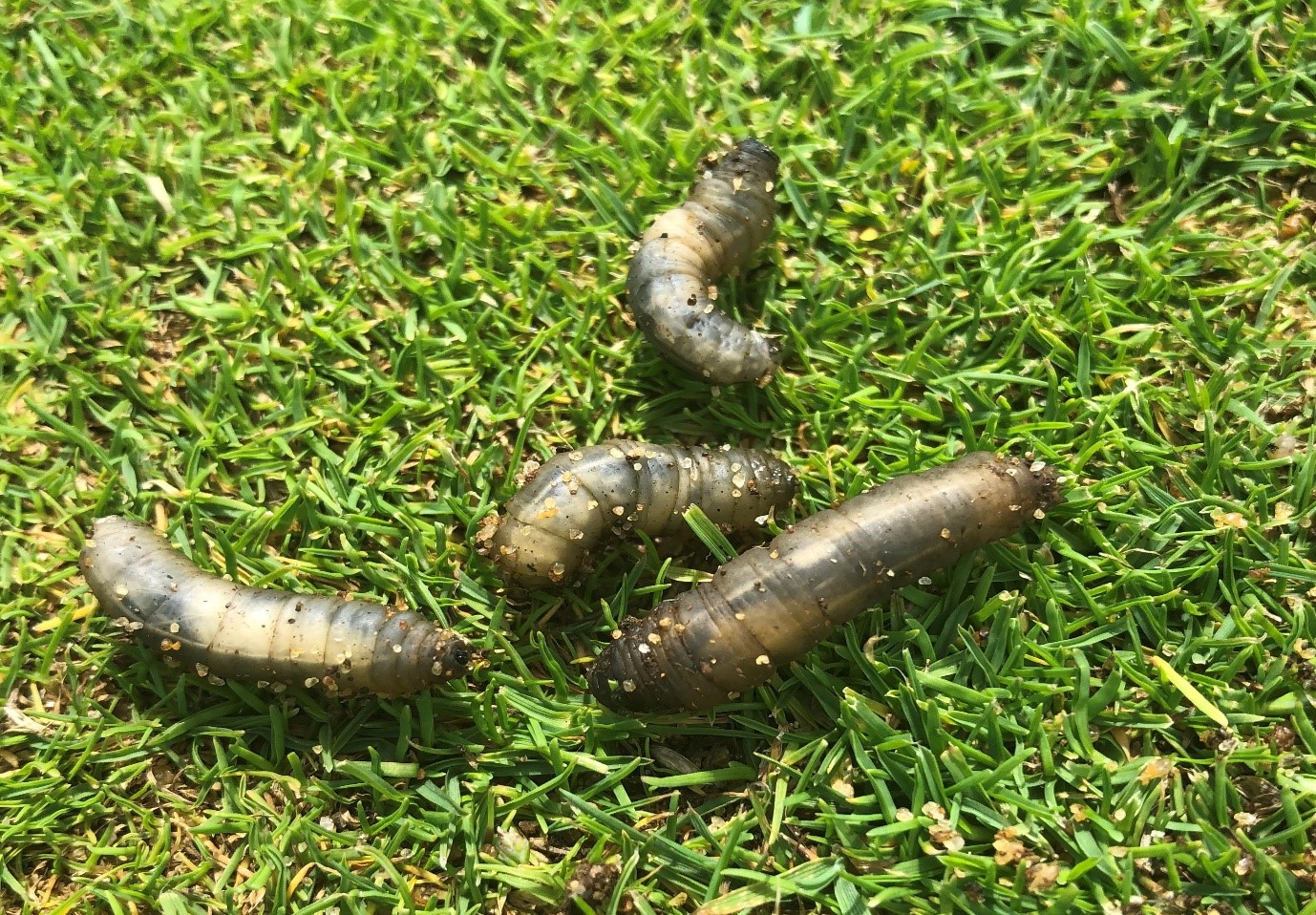
One of the benefits of starting greenkeeping over 40 years ago is that I have seen most turf maintenance practices, both good and bad, and very often I have seen these things go in and out of fashion. As an apprentice greenkeeper way back in 1979, I was often the one on the end of a heavy old canvas tarpaulin lorry cover, laying it on a wet green and holding it down with dozens of old bricks.
The reason for this strange operation, I was told, was to sweat out the leatherjackets and see how many were there so that the Head Greenkeeeper could then decide if we should apply a treatment or not, his trigger point would normally be a half a dozen or more leatherjackets in a square yard. Back in those days the treatment would be a sprinkle of Lead Arsenate powder dusted on by hand or a splash of Gamma HCH (Lindane) applied from the watering can. Thankfully things have progressed greatly since those days and we no longer have these pesticides.
However, the principle behind the “sweating out” is as relevant today, if not more so, and is being undertaken by an ever increasing number of turf professionals. Both for monitoring numbers but also now much more as a cultural control method.

Damage caused by leatherjackets emerging from aeration holes and eating roots around the edge of the hole.
The process of sweating out leatherjackets is to heavily water the turf in the early evening and cover the surface with a tarpaulin or black plastic sheeting. Ensure that you hold this down in place thoroughly with pegs, timber, old tyres or bricks. Otherwise, if the wind gets up overnight you could end up as I did once with a large tarpaulin causing traffic problems by blowing along a main road some 2 miles away from the golf course.
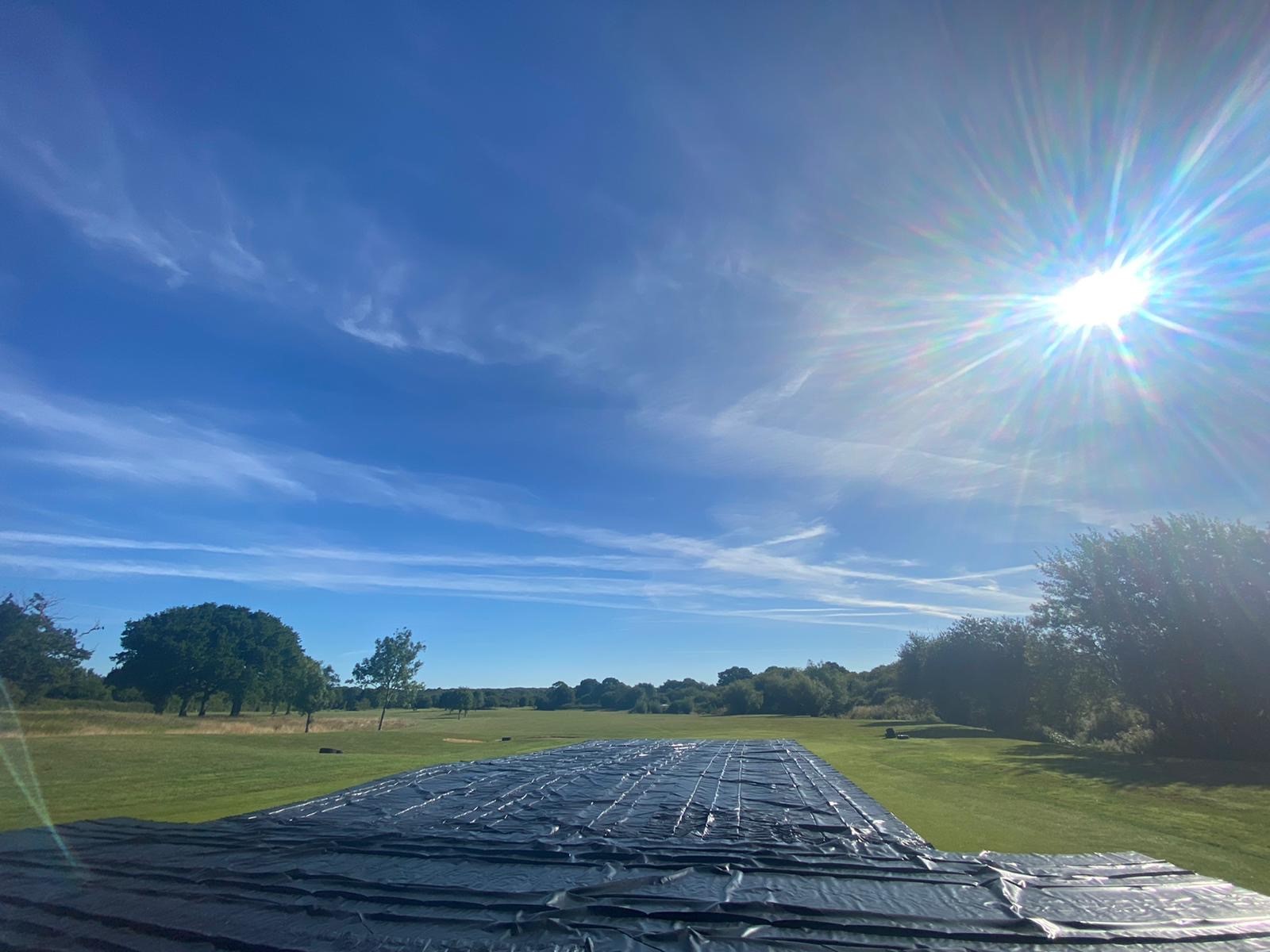
Covers laid on an irrigated area of turf and secured in place.
First thing in the morning, lift the cover and you should see a number of leatherjackets on the turf surface, count how many you have per square metre and record the number. These can then be swept up or mown up and removed and disposed of, occasionally if numbers are very high you may even need to start with a shovel and wheelbarrow! Be prepared. Do not leave them on the turf surface to long or they will find their way back down into the rootzone, particularly if you have any aeration holes. If you cover and sweat out the leatherjackets for a number of nights in a row you should see the number you count per square metre steadily decrease. Which is satisfying considering the heavy work involved in moving and pegging down covers.
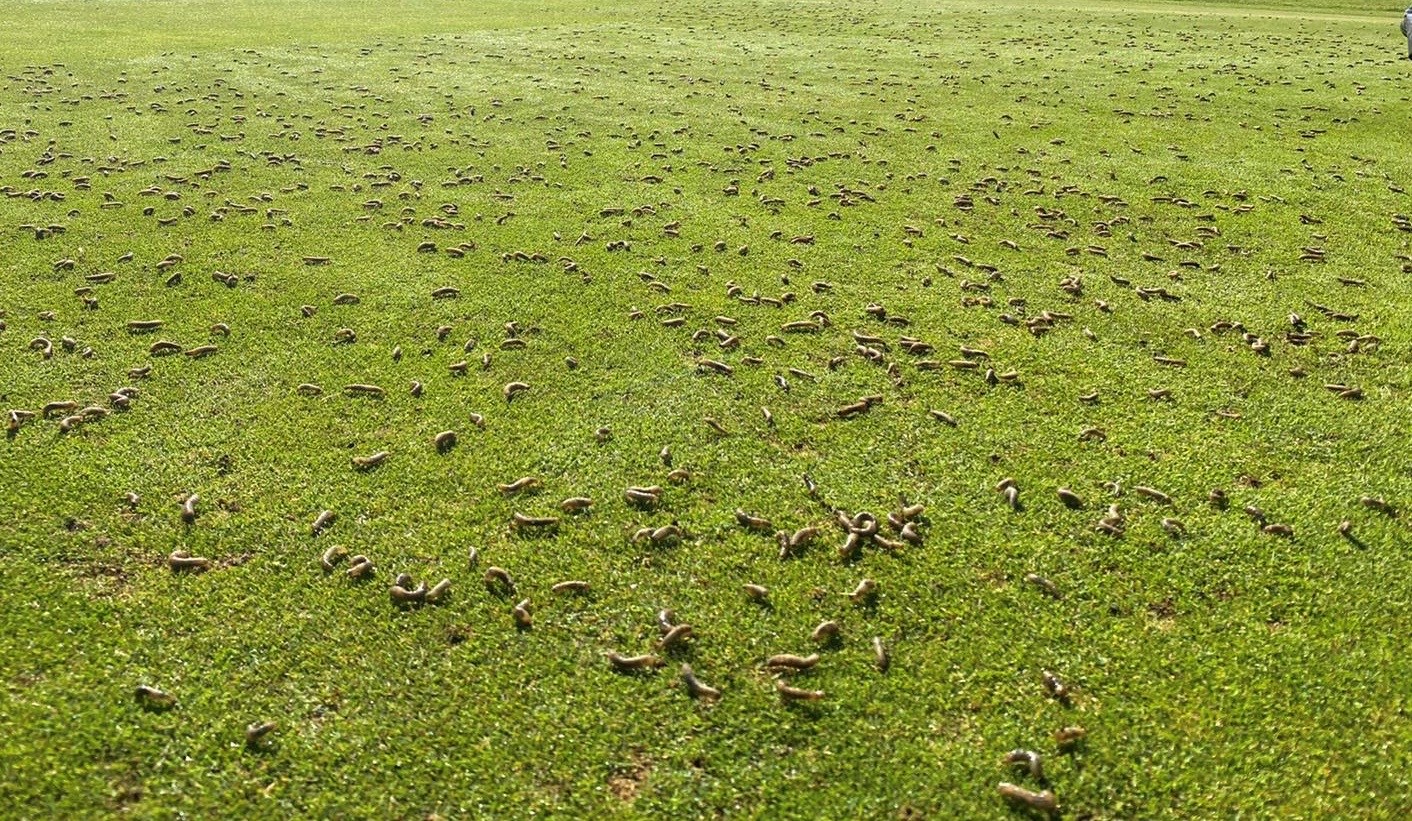
Immediately after the covers have been removed.
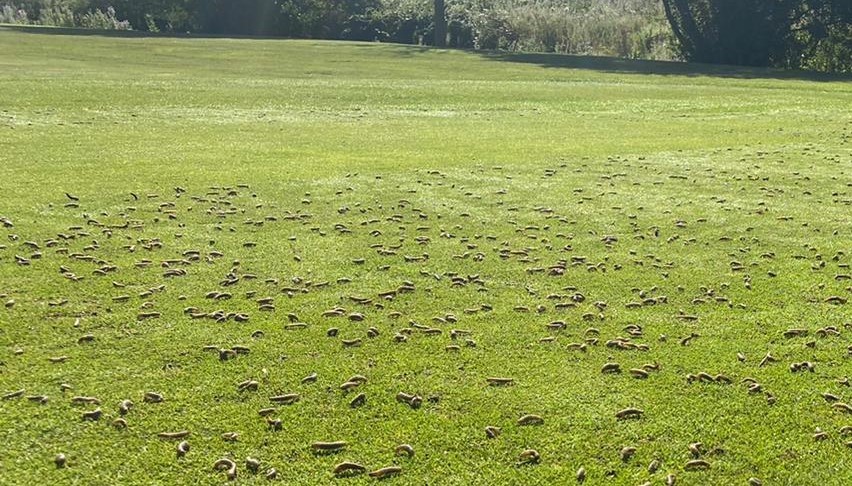
You can clearly see the dividing line where the cover has been and where it has not.
Each leatherjacket grub that you remove is potentially a female that as an adult crane fly could lay 200-300 egg that then become grubs that you would have to deal with the following year. The good thing about sweating out leatherjackets is that you can target the specific areas where you suspect them to be. It is a cultural control and relatively cheap to undertake, albeit very labour intensive!
Heavy duty plastic sheeting (in various sizes), pegs and hoses are available from Collier Turf Care, ask your local Representative or call on 01328 700600.
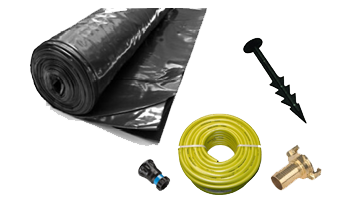
I am pleased to say that Acepelryn has been granted an emergency authorisation for preventative control of Leatherjackets in certain areas again this year. For full details please ask your BASIS qualified Collier Turf Care Representative.
To help your turf be more resistant to attack from grubs, apply Rigel G plant conditioner. Rigel-G helps strengthen plant tissue which will create a hardier plant and improve vigour over time. Stronger, healthier plants can withstand insect or disease attack much better. The unique combination of silicon and a Salicylic Acid derivative plus garlic has been found to enable plants to resist a range of Insects. Increased Silicon deposition after application of Rigel G can make plants less prone to feeding from insects. Rigel G can be used as part of a safe echo friendly plant production programme as it is not a pesticide.
Back in the early 1980s, I was managing a site which was used to carry out some of the tests of specific beneficial nematodes for controlling leatherjackets. It was really interesting to be part of the trial work and I learnt a lot about both nematodes and leatherjackets. The offspring of those nematodes are the ones that I sell today. The nematodes enters the larvae, which stops them feeding within three days of infection. The larvae then die within 10-14 days. The nematodes complete their lifecycle within the larvae, then enter the soil seeking more hosts, and so the pest control continues naturally.
Nematodes are a great biological control of leatherjackets but must be applied correctly in order to get the best results from them.
For expert help and advice contact Collier Turf Care Ltd on 01328 700600
Chris Humphrey MBPR FQA Technical Manager